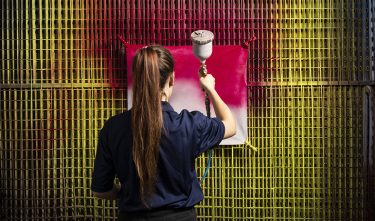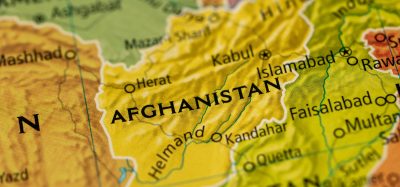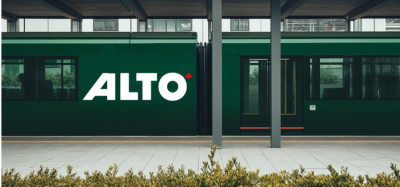Expert View: The secrets of rail leather
Posted: 14 March 2024 | | No comments yet
Muirhead lowest carbon leather is natural and luxurious while delivering durability. It meets the rail sector’s increasing demands for comfort, hygiene and sustainability. As part of our first Issue of 2024, Global Railway Review spoke to Muirhead about the secrets of leather for rail interiors.
As a well-established leather company, how do you source your materials?
The term ‘Vertical Control’ is used in many industries, but at Muirhead, it starts with how we source our hides. We obtain 99% of our hides from the UK and Ireland, generally from within 400 miles of our tannery in Scotland.
Northern European breeds are among the best in terms of size, shape, and condition. The high standards of animal welfare and hide traceability also contribute to their excellence. We can now trace a single hide all the way from the farm and abattoir, where it was acquired as a by-product of the meat industry, to the finished seat cover on a specific train.
At Muirhead, we have full end-to-end vertical control over our leather production, which sets us apart from others in the market. This is because every piece of finished leather we produce is tanned in our own family-owned tannery.
What qualities does leather possess that make it perfect for train interiors?
We are driven by consistency, durability, comfort, technical excellence, and passenger safety. By having complete control over the entire process, we offer superior consistency across all our finished leather stock and custom-made products. This level of vertical control provides numerous benefits to our passenger transport customers.
While genuine leather is more expensive to use than other textiles, Muirhead’s rail leather has a significant advantage – it can last a very long time in service. That’s why we offer a seven-year warranty, and many operators have reported that Muirhead leather can roll for 10 years or more. The durability of this product not only reduces the frequency and associated expenses of seat refurbishment programmes but also extends the trains’ active service life.
And what happens to old leather seat covers when they are no longer usable? At Muirhead, we have introduced a new take-back scheme that allows the covers to be returned to our tannery in Scotland. These old covers are then processed through our unique Thermal Energy Plant to reclaim energy for new leather.
What makes leather a better fit for train interiors compared to materials such as plastic?
We conducted a large evaluation study to compare the behaviour of three different surface materials for resilience and level of degradation under specific controlled conditions. Muirhead leather showed excellent flexibility and versatility to temperature change, as expected from a natural product when compared to alternative non-leather surface materials.
Muirhead leather seats are incredibly comfortable due to their natural insulation capabilities and light surface coatings. Genuine leather is breathable, allowing heat and vapour to dissipate, ensuring a comfortable seating experience, even on long journeys.
We have made an investment in-house to conduct flammability testing, which allows us to assist rail seat manufacturers with certifying a complete seat that has leather upholstery. This applies to new builds, refurbishments, or upgrades. It’s important to note that flame retardancy standards for rail seat coverings are certified through a combination of burn tests, not just based on the surface material alone.
The Filk GmbH institute’s independent, accredited testing laboratory provides a wide range of testing services (standardised and normed tests in accordance with German, European and international standardisation bodies (DIN, EN, ISO, VDA). They concluded that leather shows the most comprehensive behaviour for universal criteria. Leather performs particularly well on key measures such as strength, tear resistance, and water vapour permeability/ absorption.
How can you simulate passenger transport conditions in your testing process?
Our laboratory is equipped with climatically controlled chambers and equipment to regulate temperature and humidity to ensure consistency from test to test in line with the required test standards.
Our Fire Resistance Lab allows us to conduct comprehensive full-seat flammability testing. By having this capability in-house, we reduce test times on average from two months to just four hours. We can collect first-hand data and enhance our understanding of the key mechanisms that impact test results. Our measuring equipment provides real-time data, measuring multiple gases precisely every couple of seconds, including Oxygen, Carbon Dioxide and Carbon Monoxide, calculating the heat release rate, the amount and rate of smoke emitted, temperature, and mass loss.


You call leather ‘the original upcycling material’, how important are sustainable farming practices in your company?
The use of hides as a by-product of the meat industry, which would otherwise go to waste and landfill, is a crucial part of our mission to upcycle natural, biobased materials sourced locally from grass-fed cattle. This practice plays a pivotal role in our efforts to achieve a ‘net zero’ Muirhead leather. Our local sourcing minimises transport impact, and we obtain hides from a responsible agricultural system globally renowned for its exceptional traceability and transparency standards.
We deliver full supply chain transparency with 100% traceability and 0% deforestation, sourcing 100% by-products from the UK & Ireland, one of the highest-rated territories in the Animal Protection Index. The UK’s Animal Welfare Committee developed the Five Freedoms of Animal Welfare, which have been adopted worldwide.
Our commitment to traceability aligns with the Cattle Tracing Scheme, ensuring that our hides’ origin is meticulously accounted for. Scottish Agriculture is already net zero, the UK Climate Change Committee (UKCCC) and the British Veterinary Association (BVA) predict that all UK agriculture will achieve net zero status by 2030.
How does Muirhead commit to their low carbon targets in their leather manufacturing?
Our leather has an impressively low carbon footprint of only 8kg CO2e/m2, which sets a benchmark for the rest of the industry to follow.
Muirhead is leading the global leather industry towards zero-carbon impact through sustainable initiatives and progress. You can find detailed insights into these efforts in the Scottish Leather Group’s Annual Environmental, Social & Governance Report. The report adheres to the Science Based Targets initiative (SBTi), and all sustainability data undergoes rigorous independent verification, including Life Cycle Analysis.
Sustainability is integral to our supply chain. We have a patented circular process that is advanced and unique, reducing carbon while incorporating key metrics such as energy recovery, water recycling, renewable energy adoption, and using locally sourced, traceable raw materials. We prioritise responsible water usage by sourcing water from our natural source and treating it meticulously. We either recycle it or return it to the same watershed without any environmental impact.
We do not support “greenwashing”. To account for the carbon footprint of our products, we use ISO-accredited Life Cycle Analysis (LCA). This technique measures various impacts, including the GWP100, and takes into account upstream farming influences. Our LCA data measures at just 30-50% of the impact reported by other leather manufacturers. We use this approach to make responsible decisions, identify “hot spots”, and minimise our products’ environmental impact.
We aim to achieve a net zero carbon footprint on Scope 1 & 2 by 2025. We are committed to research and development of new and innovative techniques, such as bio and plant-based chemistry systems, novel tanning systems, alternative applications of collagen, and the recycling of leather.
We opened our Super Tannery in September 2023 after seven years of development. Setting new standards for leather manufacture, the new £14 million facility is the result of the latest round of multi-million-pound investments by Scottish Leather Group in its world-class facilities.
Tanning is where the raw hides are treated in drums filled with water and tanning agents to transform them into Muirhead’s durable, high-performance leather material. The 14 new ‘super’ drums replace 30 conventional hide drums, enabling Muirhead to process greater batches while unlocking significant improvements in environmental performance. The tannery’s hide processing technology brings a reduction of 82% in energy use and 42% in water use compared to the group’s previous equipment.
This year, we will prioritise incorporating more biobased or harmless elements in our leather production methods through C14 analysis. Additionally, we are set to launch a bisphenol-free product seven years before it becomes mandatory by regulatory deadlines. This will result in creating sustainable seating, representing the next generation of environment-friendly products we will offer our customers.
To find out more, visit: www.muirhead.co.uk
Issue
Related topics
Rail Interiors, Sustainability/Decarbonisation, The Supply Chain







